What Is The History Of Golf And Who Invented It
What is the history of golf and who invented it? Most people believe golf began in Scotland over 500 years ago. In 1457, a Scottish king banned the game because soldiers were playing it instead of practicing archery.
Even though older stick-and-ball games like chuiwan in China and paganica in Rome existed, modern golf started in Scotland. The Old Course at St Andrews, built in 1552, is the oldest golf course still used today.
As the game grew, it became more organized with 18-hole courses and rules shared around the world. Learning where golf came from helps us see how it became one of the most popular sports today.
Over time, golf became more than a game. It became a global sport, played everywhere from the U.S. to Japan. It’s not just about swinging clubs, it’s about history, tradition, and the love of the game.
Table of The Important Moments in the History of Golf
| Year | Event | Place | Why It Matters |
| 1457 | Golf was banned by King James II | Scotland | The first written record of golf in history |
| 1502 | Ban lifted by King James IV | Scotland | The king starts playing, making golf more popular |
| 1552 | Golf was played at St Andrews | Scotland | Known as the oldest golf course still used today |
| 1744 | First golf club formed (Honourable Company of Edinburgh Golfers) | Scotland | The first set of official golf rules was written |
| 1860 | The first Open Championship was held | Prestwick, Scotland | The world’s oldest major golf tournament starts |
| 1888 | Golf was introduced in the United States | New York, USA | First permanent golf club in America (St Andrews GC) |
| 1894 | The USGA (United States Golf Association) was founded | USA | Started governing golf in America |
| 1934 | First Masters Tournament held | Augusta, Georgia, USA | Begins one of golf’s biggest events |
Note: This table shows how golf grew from a simple game in Scotland into a worldwide sport.
Who Invented Golf and Where Did It Begin: A Golfer’s Take on the Game’s True Origins
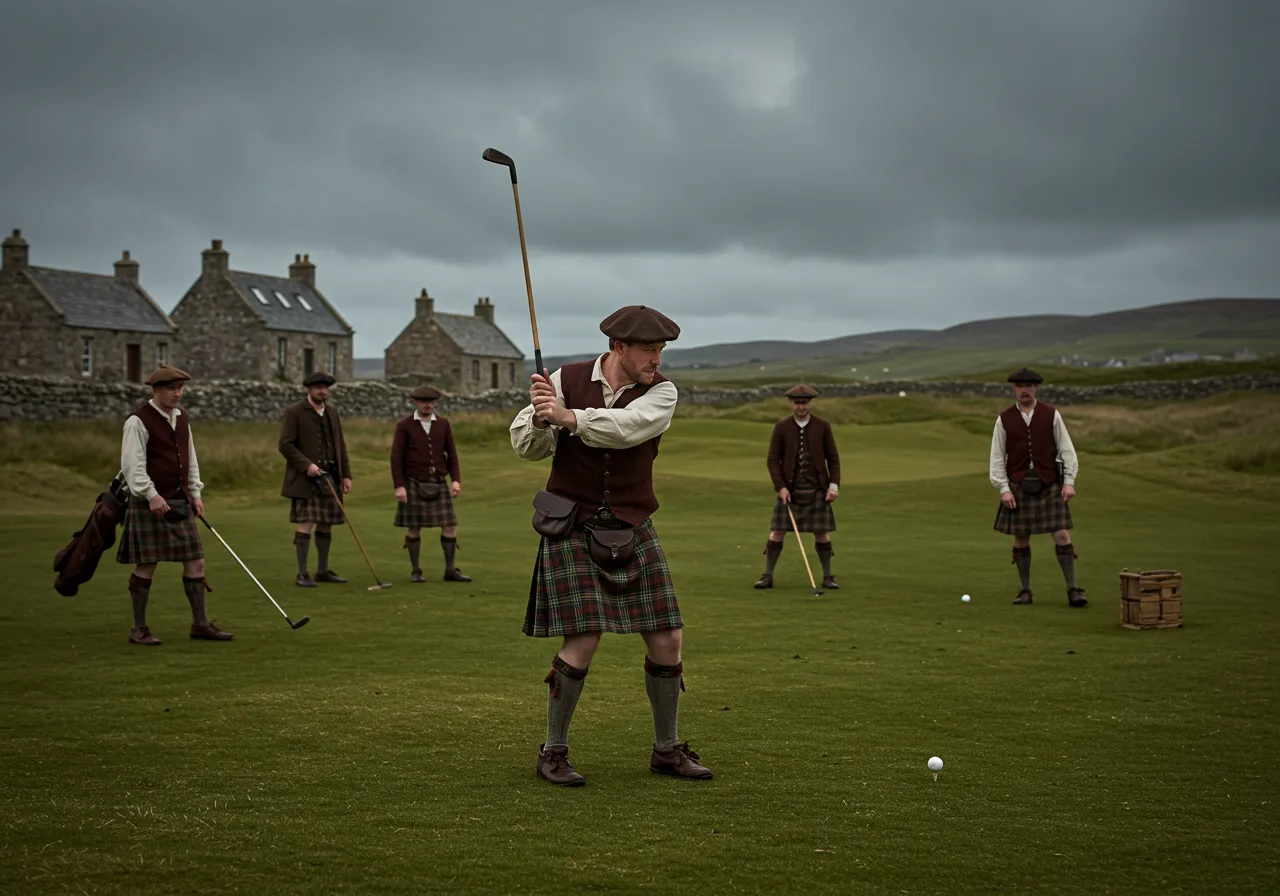
Was the Game of Golf Really Invented in Scotland
If you ask me or any lifelong golfer, we’ll say: Yes, golf began in Scotland. There’s actual proof in history books.
In 1457, King James II of Scotland banned golf because it was so popular that soldiers were skipping archery practice to play it.
And when I first teed off at St Andrews, known as the “Home of Golf,” I felt the history in the air.
That course has been used since 1552, and it’s the oldest active golf course in the world. Scotland didn’t just love golf; they built the sport from the ground up.
What Ancient Games Looked Like Golf Before Scotland
Before modern golf took shape in Scotland, other cultures had games that were a lot like golf, but not exactly the same.
China’s Chuiwan: The Earliest Golf-Like Game
Back in the Song Dynasty, Chinese players played chuiwan, using a curved stick to hit a small ball into a hole. Sound familiar? It even had rules and different clubs for different shots.
Rome’s Paganica: A Soldier’s Game with a Stick and Ball
In ancient Rome, soldiers played a game called paganica, where they hit a leather ball stuffed with wool using a bent stick.
It wasn’t exactly golf, but it had the same idea: hitting a ball through open space toward a goal.
These games show that the concept of golf existed worldwide, but none had the impact or structure that came from Scotland.
Why Do Golf Historians Credit Scotland with Modern Golf
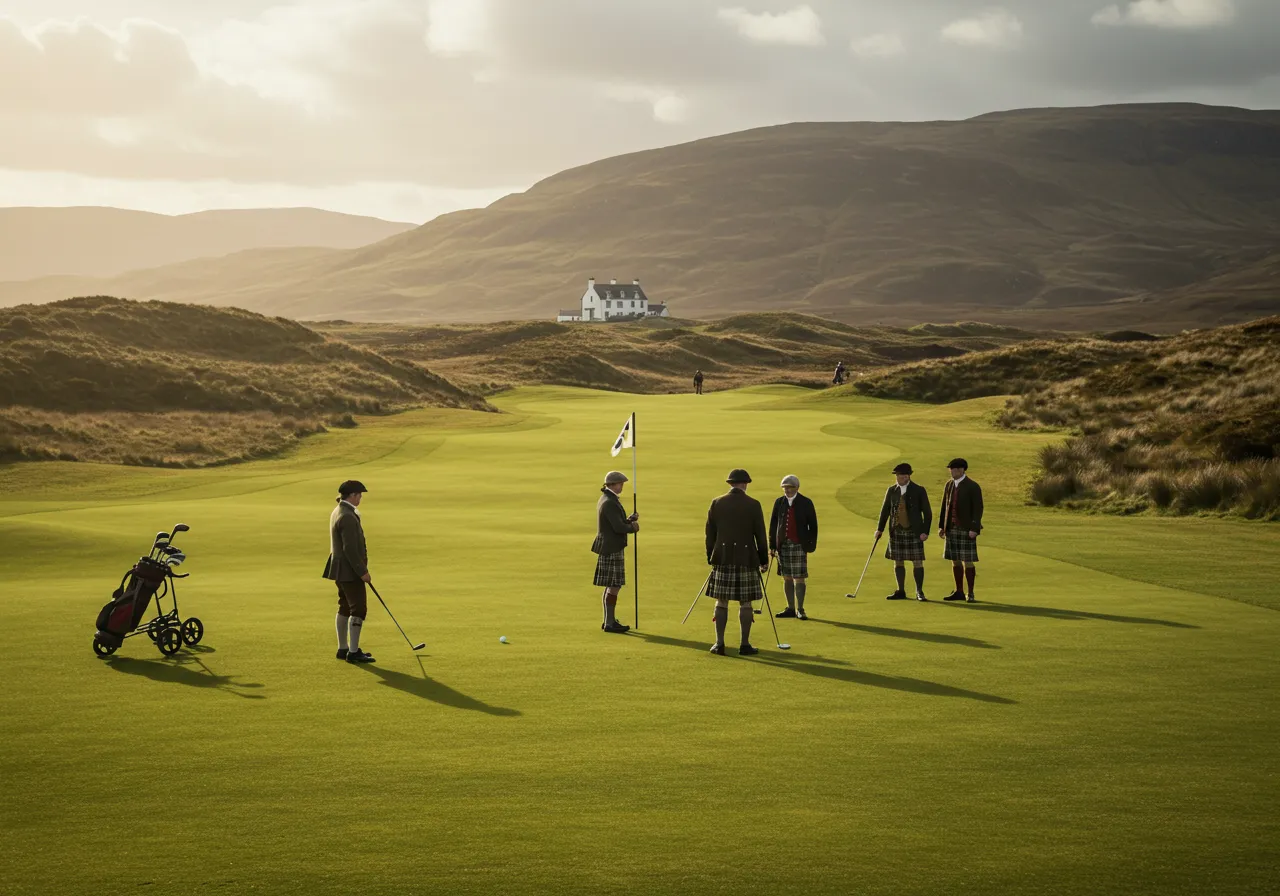
Even though similar games were played elsewhere, Scotland is where golf became an official sport.
Scotland Wrote the First Rules of Golf
In 1744, the Honourable Company of Edinburgh Golfers created the first known set of golf rules.
These rules shaped how we play today, including scoring, the hole system, and using clubs for different shots.
The First Golf Club and the Rise of Competitive Golf
Scotland also gave us the first organized golf club, and with it came the idea of tournaments, 18-hole courses, and scorekeeping.
That’s why historians and players agree: Scotland didn’t just invent golf, they refined it into the global sport we now know.
What Is the Timeline of Golf’s History
How Did Golf Evolve From a Simple Game to a Global Sport
As someone who grew up swinging clubs on all kinds of courses, I’ve always been fascinated by how golf changed over time. Golf didn’t just appear overnight.
It slowly grew from a hobby played on fields in Scotland to the global sport we know today.
At first, it was just people hitting pebbles with sticks. But over hundreds of years, golf became more organized, rules were written, clubs were formed, and courses became standardized.
The game kept improving, and people around the world began to play it.
Why Was Golf Banned by King James II in 1457
One of the earliest known golf moments is a bit funny; it got banned! In 1457, King James II of Scotland stopped people from playing golf because soldiers were playing too much and ignoring archery practice.
But instead of disappearing, golf became even more popular. Later kings, like James IV, actually played golf themselves, and that helped the game grow.
When Did Golf Become an Organized Sport
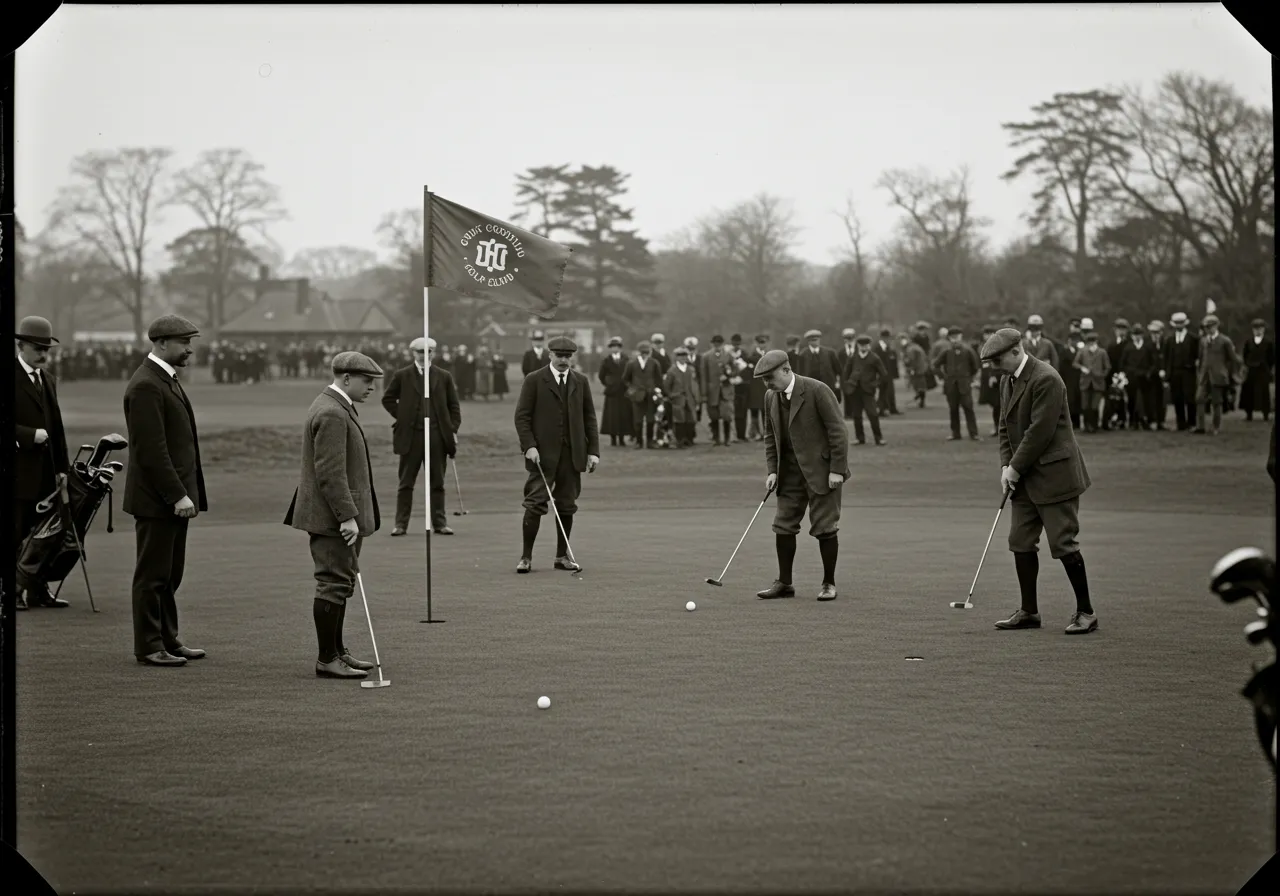
Golf became truly organized when people started writing rules and forming clubs. In 1744, the Honourable Company of Edinburgh Golfers was created.
That club wrote the first official 13 rules of golf, and that’s when things really started to change.
Before that, people just made up their own rules. But with written rules, tournaments could be held, scores could be tracked, and the sport could grow across countries.
When Was the First Golf Club Officially Formed
That first golf club in 1744 changed everything. The Honourable Company of Edinburgh Golfers didn’t just play for fun; they made golf more official. They also organized a competition for the best players.
That event later became part of the Open Championship, one of the biggest golf events in the world today.
The club helped shape how we play now, using different clubs for different shots, counting strokes, and playing on 18-hole courses.
Table: The Key Moments That Shaped Golf
| Year | Event | Why It Matters |
| 1457 | Golf was banned by King James II | First written proof of golf’s popularity |
| 1502 | Ban lifted; King James IV starts playing golf | Golf gains royal approval and spreads among nobles |
| 1552 | Golf is played on St Andrews Links | St Andrews becomes known as the “Home of Golf” |
| 1744 | First golf club was formed in Edinburgh | Rules are written; golf becomes structured |
| 1764 | St Andrews sets the standard of 18 holes | 18 holes becomes the standard for golf courses worldwide |
| 1860 | First Open Championship held in Prestwick | Start of professional golf tournaments |
| 1888 | Golf comes to America (St Andrew’s GC in New York) | Golf spreads internationally |
| 1894 | USGA is founded | Official golf rules and competitions are organized in the U.S. |
Note: This table shows how golf slowly grew from a simple stick-and-ball game into a worldwide sport. It started in Scotland, where the first golf clubs, rules, and famous courses like St Andrews were created.
How Many Holes Did Golf Originally Have
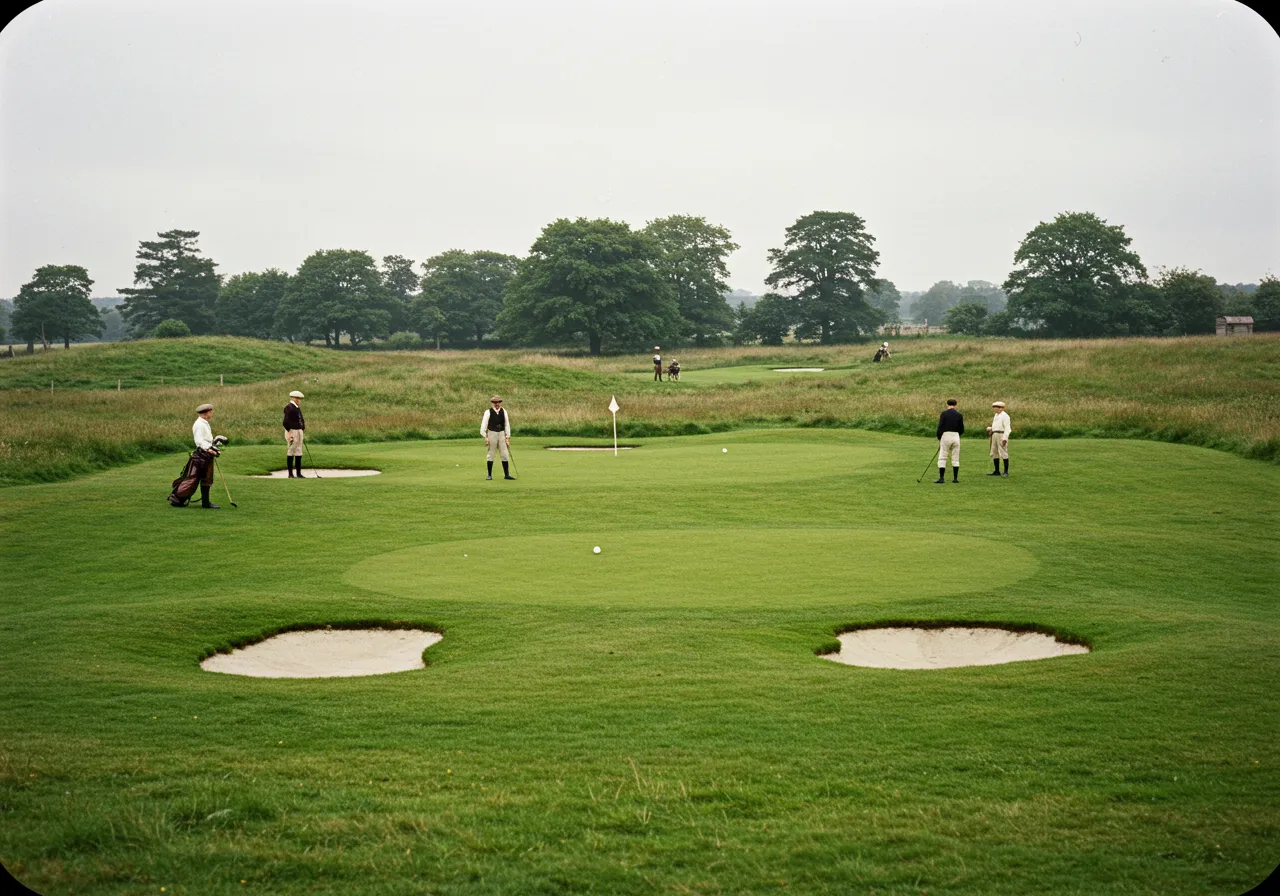
Was Golf Always Played With 18 Holes or Did It Start With a Different Number
When I first learned about golf as a kid, I thought every course had 18 holes. But here’s something most new players don’t know: Golf didn’t always have 18 holes.
In the early days, especially in Scotland, some golf courses had as few as 5 holes, while others had 10, 12, or even 22!
One of the most famous courses in the world, St Andrews, originally had 22 holes, 11 holes played out and the same 11 played back in.
But that didn’t last forever.
Why Did Golf Shift From 12 Holes to the 18-Hole Format
The change happened in 1764. At St Andrews, they decided that some of the holes were too short, so they combined a few to make the course more challenging and fair.
After that change, St Andrews had 18 holes, and because it was such a respected course, other golf clubs began copying the format.
That’s how 18 holes became the official standard for golf courses around the world.
So next time you play a full round, remember: it all started with a few smart decisions in Scotland!
What Is the Meaning or Purpose Behind All 18 Holes in Golf
A full round of golf with 18 holes isn’t just about length, it’s about rhythm and balance. From my experience as a golfer, here’s how it breaks down:
- The first few holes warm you up.
- The middle holes test your skill with different distances, wind, and slopes.
- The last few holes (especially 16–18) are where the pressure builds, and tournaments are often decided.
Each hole is designed to be unique, with different pars, hazards, and layouts.
That’s what makes golf so exciting: every hole is a new challenge, and no two holes feel the same.
When Did Golf Spread Beyond Scotland
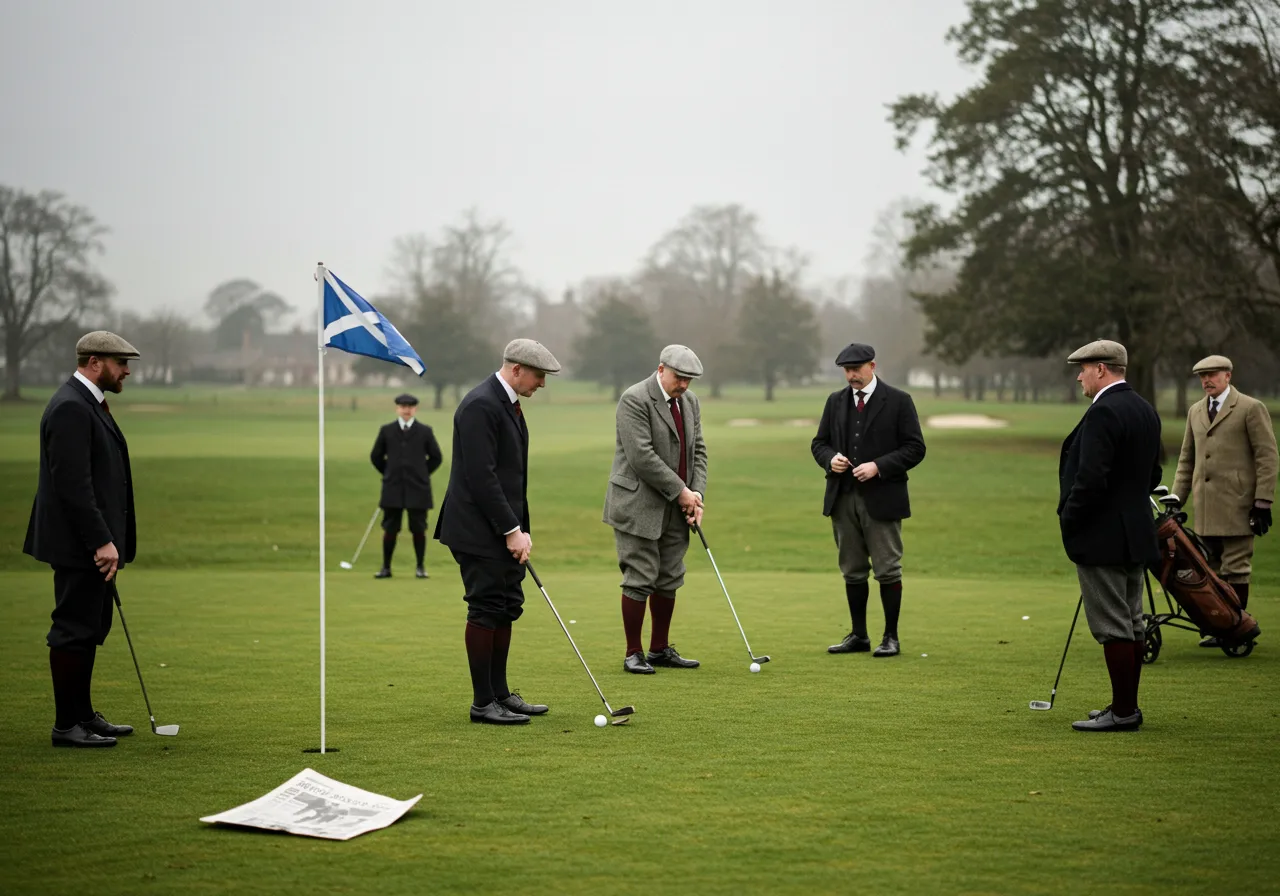
When and How Did Golf Come to America From Scotland
Golf started in Scotland, but it didn’t stay there. As a pro, I’ve had the chance to play in the U.S., and trust me, the golf scene there is huge.
But it took a long journey to get from Scottish hills to American fairways.
Golf first came to America in 1888, when a Scottish immigrant named John Reid set up a small golf hole in his backyard in Yonkers, New York.
He and his friends loved it so much that they formed the St Andrew’s Golf Club, the first official golf club in the United States.
That little start turned into something big. Today, the U.S. has more golf courses than any other country in the world.
What Role Did British Colonies Play in Spreading Golf to the World
Golf didn’t just go to America; it spread to India, Australia, South Africa, and Canada through the British Empire.
When British soldiers and traders moved to new places, they took their love of golf with them. They built courses, started clubs, and taught the locals.
That’s why you’ll find old golf clubs in countries that were once British colonies, some of them even older than many American clubs!
This global spread helped golf become an international sport, not just a Scottish tradition.
Who Helped Make Golf So Popular in the United States
Once golf reached America, a few big names helped it grow fast. One of them was Francis Ouimet, a 20-year-old amateur golfer who won the U.S. Open in 1913.
He beat the best players from Britain, and that made headlines across the country.
That one win made people fall in love with the sport. Soon after, more courses were built, and in 1894, the United States Golf Association (USGA) was founded to govern golf in the U.S., just like the R&A does in Scotland.
From there, American golf legends like Bobby Jones, Arnold Palmer, and Tiger Woods helped turn golf into a mainstream sport loved by millions.
Table: How Golf Spread from Scotland to the Rest of the World
| Year | Event / Milestone | Country / Region | Why It Matters |
| 1820s | Golf was introduced to India by British soldiers | India | The first golf clubs in Asia were established during British rule |
| 1844 | Royal Calcutta Golf Club was founded | India | One of the oldest golf clubs outside the UK |
| 1845 | First golf course built in Australia | Australia | Golf spread through British colonies |
| 1856 | Royal Curragh Golf Club was established | Ireland | First golf club in Ireland, part of British expansion |
| 1885 | First South African golf club formed | South Africa | British settlers brought golf to Africa |
| 1888 | St Andrew’s Golf Club was founded by John Reid | United States (New York) | First official U.S. golf club — start of American golf history |
| 1894 | USGA founded | United States | Governing body formed to manage golf in America |
| 1913 | Francis Ouimet wins U.S. Open as amateur | United States | Inspires massive interest in golf across the U.S. |
Note: This table shows how golf spread from Scotland through British influence and immigration, especially to countries like India, Australia, South Africa, and the U.S. Each of these milestones helped turn golf into a global sport, not just a Scottish tradition.
What Is the Oldest Golf Course in the World
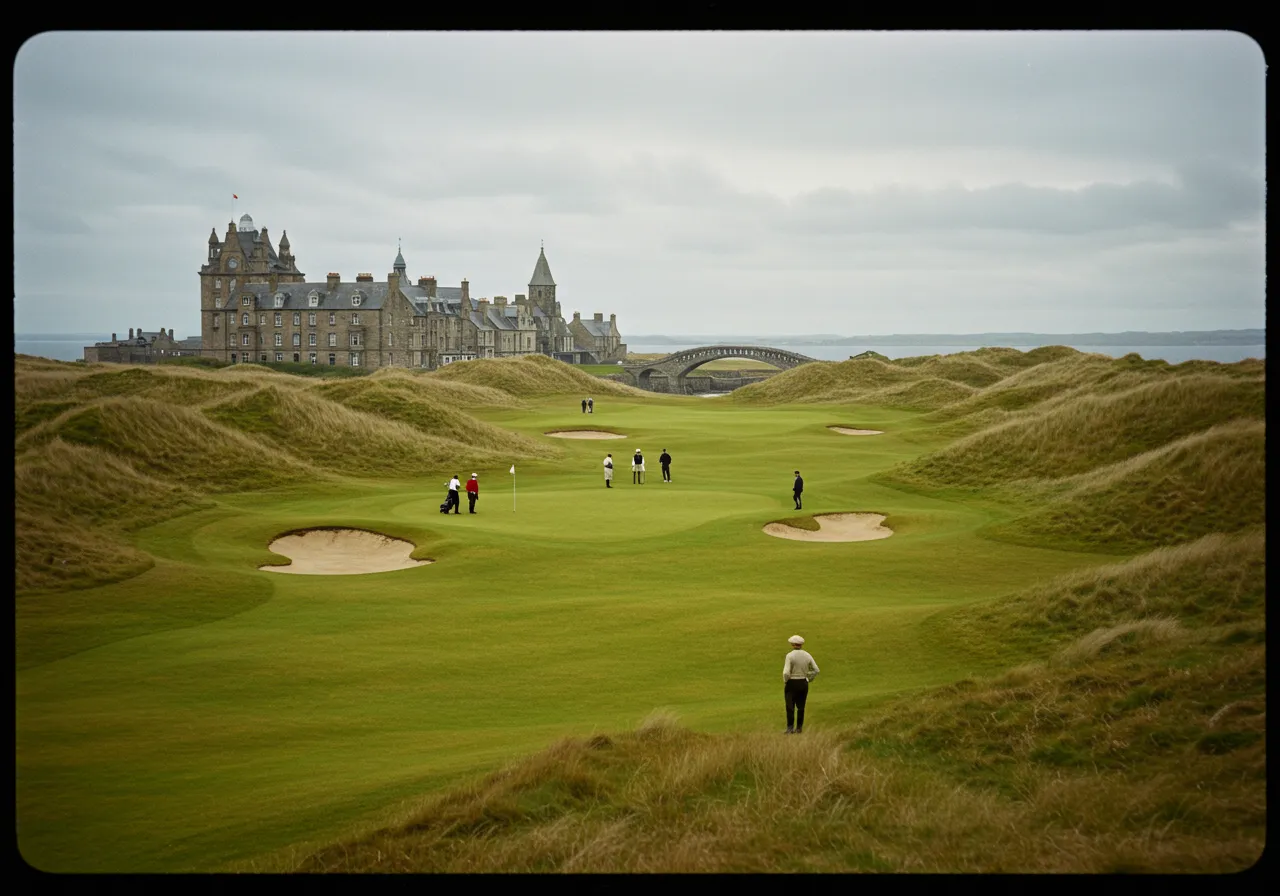
Where Is the Official Birthplace of Golf Today
If you ever visit St Andrews in Scotland, you’ll be standing on the land where modern golf was born.
Even though early golf-like games were played in places like China and Rome, the real birthplace of organized golf is Scotland, and it’s where the oldest course still exists today.
That course is called the Old Course at St Andrews. I’ve played there myself, and let me tell you, it’s like stepping into a golf time machine. Every swing feels like you’re part of history.
Is the Old Course at St Andrews Still Active Today
Yes, and not only is it still active, but it’s also one of the most famous golf courses in the world. The Old Course has been used for golf since 1552, and people still play on it every day.
Even major tournaments like The Open Championship are held there.
The layout, the bunkers, the wind, everything about it makes it both historic and challenging. That’s why every golfer dreams of playing there at least once in their life.
What Makes a Golf Course “Historic” According to Golf Traditions
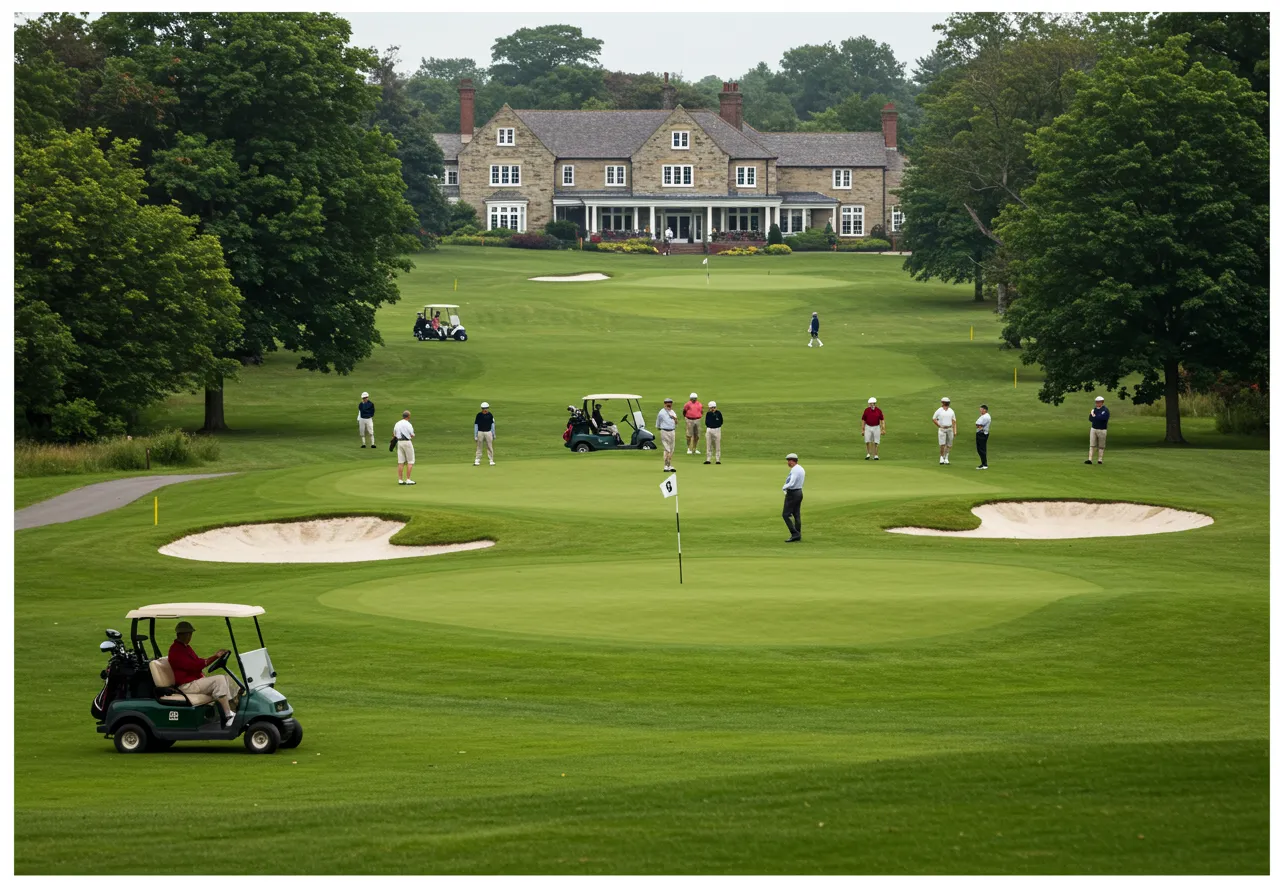
In golf, a course is considered “historic” if it meets a few key things:
- It’s been used for a long time, often over 100 years
- It has hosted important tournaments, like The Open and PGA events
- It helped shape the rules or format of the game (like 18 holes)
- It’s known for its famous players or moments.
St Andrews checks all those boxes; it’s where the 18-hole layout was first set, where champions are made, and where the spirit of golf still lives.
Table: Oldest and Most Historic Golf Courses in the World
| Golf Course Name | Location | Founded / First Played | Historic Importance |
| Old Course at St Andrews | St Andrews, Scotland | 1552 | Widely known as the birthplace of golf and the oldest active course in the world |
| Musselburgh Links | East Lothian, Scotland | 1672 (possibly earlier) | Hosted the Open Championship in the 1800s; early evidence dates back to Mary, Queen of Scots |
| Royal Aberdeen Golf Club | Aberdeen, Scotland | 1780 | 6th oldest club; known for traditional links layout |
| Royal Blackheath Golf Club | London, England | 1608 (as a club) | One of the oldest known golf clubs, though not the original course |
| Royal North Devon Golf Club | Devon, England | 1864 | The oldest course in England is still played on its original land |
| St Andrews (New Course) | St Andrews, Scotland | 1895 | Built to relieve demand on the Old Course, it is still historic, with a traditional layout |
Note: This table highlights the most historic golf courses still in use today.
Why Is It Called ‘Golf’ (Etymology and Meaning)
What Does the Word ‘Golf’ Actually Mean and Where Did It Come From

As a golfer, I’ve heard this question many times:
Why is it called golf? What does the word even mean?
The truth is, “golf” comes from an old Dutch word “kolf” or “kolve,” which means club or stick. That makes sense, right? Because we play golf using different kinds of clubs.
Later, when the game came to Scotland, the word changed a little. It was spelled like goff, gouf, and finally golf.
So, the name isn’t just random; it’s connected to the equipment we use.
Is ‘Golf’ Really an Acronym for “Gentlemen Only, Ladies Forbidden”
Nope, that’s just a myth, and I’ve heard it way too many times at tournaments.
Some people think G.O.L.F. stands for “Gentlemen Only, Ladies Forbidden”, but that’s not true. Golf was never meant to shut women out.
In fact, Mary, Queen of Scots, was one of the first recorded female golfers; she played in Scotland in the 1500s.
So the word golf is not an acronym, and everyone is welcome to play. Always has been.
When Did the Word ‘Golf’ First Appear in Real History
The first time the word golf showed up in writing was in 1457 in a law made by King James II of Scotland.
That law actually banned golf because soldiers were skipping archery practice to play too much!
That means golf was already popular back then, and the name had already stuck.
From the Dutch word kolf to the Scottish golf, the name has stayed with the sport ever since.
Who Are the Pioneers and Legends of Early Golf
Who Is Known as the Father of Golf and Why
When you love golf like I do, you want to know who made the game what it is today. One name comes up more than any other: Old Tom Morris.
He’s often called the “Father of Golf” because he helped build courses, design golf equipment, and even coached younger players.
Old Tom was born in St Andrews, Scotland, in 1821, and he spent almost his whole life working with the game.
He didn’t just play, he designed famous courses, helped shape the rules, and made golf more fair and fun for everyone.
Even today, we use some of the ideas he introduced. That’s why every golfer, including me, respects his legacy.
Who Created the First Golf Ball and Golf Club
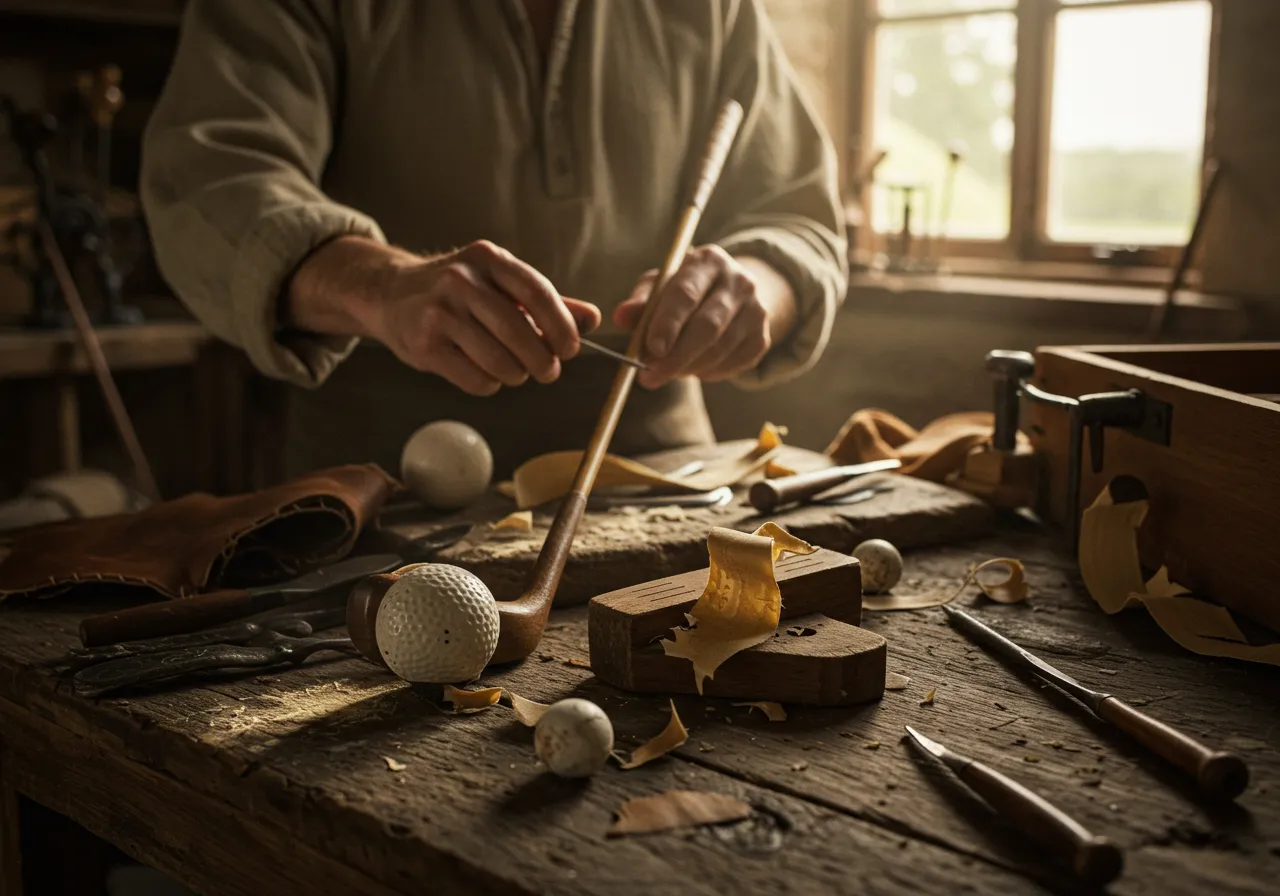
Back in the early days, golf balls were made from wood, and later from leather stuffed with feathers; these were called featheries. They were made by hand and were expensive!
The first clubs were also handmade by local blacksmiths and carpenters. No factories, no high-tech grip, it’s just simple tools made with care.
As golf grew, clubmakers in Scotland became famous for crafting better balls and clubs.
These tools helped players hit farther and straighter, just like the ones we use now, only made of steel and carbon fiber!
What Did Allan Robertson and Old Tom Morris Do for the Game of Golf
If you love golf history, you have to know the names Allan Robertson and Old Tom Morris. These two were like the first golf superstars.
Allan Robertson was known as the best golfer in the world in the 1800s. He was also one of the first to make golf balls professionally and to charge for golf lessons.
Old Tom Morris was his apprentice. They played together, learned from each other, and later became friendly rivals. After Allan passed away, Old Tom carried on his work creating golf courses, helping with tournament rules, and teaching his own son, Young Tom Morris, who also became a legend.
Together, they built the foundation for the sport I and millions of others love today.
Why Are Golf Terms Like Birdie, Eagle, and Albatross Used
What Does the Golf Term ‘Birdie’ Mean and Where Did It Come From

When I first made my first birdie, I didn’t care where the word came from; I was just excited!
But later I learned that a birdie means you score one stroke under par on a hole, and it actually started as slang in America in the early 1900s.
The story goes that a golfer hit a really good shot and called it a “bird of a shot,” which was a popular way of saying “cool” or “awesome” at the time.
His friends agreed, and from then on, one shot under par became known as a birdie.
Now, every time a golfer gets a birdie, it’s a good moment, if you’re a beginner or a pro like me.
What Is Another Word for a Double Eagle and What Does It Mean
Here’s where it gets fun: if a birdie is one under par, and an eagle is two under par, what’s three under?
That’s called a double eagle, but many golfers (especially outside the U.S.) call it an albatross. Both terms mean the same thing: you completed the hole three strokes below par.
It’s super rare, I’ve only seen a few in my entire career, and it usually happens on long par 5 holes when you hit the ball in the cup in just two shots.
How Did These Golf Scoring Terms Evolve Over Time
At the beginning, golf scores were just numbers, no fun names. But in the early 1900s, especially in America, golfers started using bird names as slang to describe great scores:
- Birdie – 1 under par
- Eagle – 2 under par (a bigger, stronger bird)
- Albatross – 3 under par (a rare bird for a rare shot)
These fun names made the game more exciting and easier to remember. Today, we still use them at every level of golf, from kids just learning to pros on the PGA Tour.
Table: Meaning and Origin of Common Golf Scoring Terms
| Term | Score Meaning | Strokes vs Par | Where the Term Came From |
| Birdie | A really good score | 1 stroke under par | American slang “a bird of a shot” (early 1900s, New Jersey, USA) |
| Eagle | An even better shot than a birdie | 2 strokes under par | Chosen to represent a bigger, stronger bird |
| Albatross (Double Eagle) | A very rare and amazing shot | 3 strokes under par | Named after a rare bird; used mostly in UK and international golf |
| Bogey | A score that’s just a bit over par | 1 stroke over par | From an old British song about the “Bogey Man” (late 1800s) |
Note: This table explains how golf scoring names use birds and slang to make the game more fun and easy to remember.
How Did Tiger Woods Impact Modern Golf History
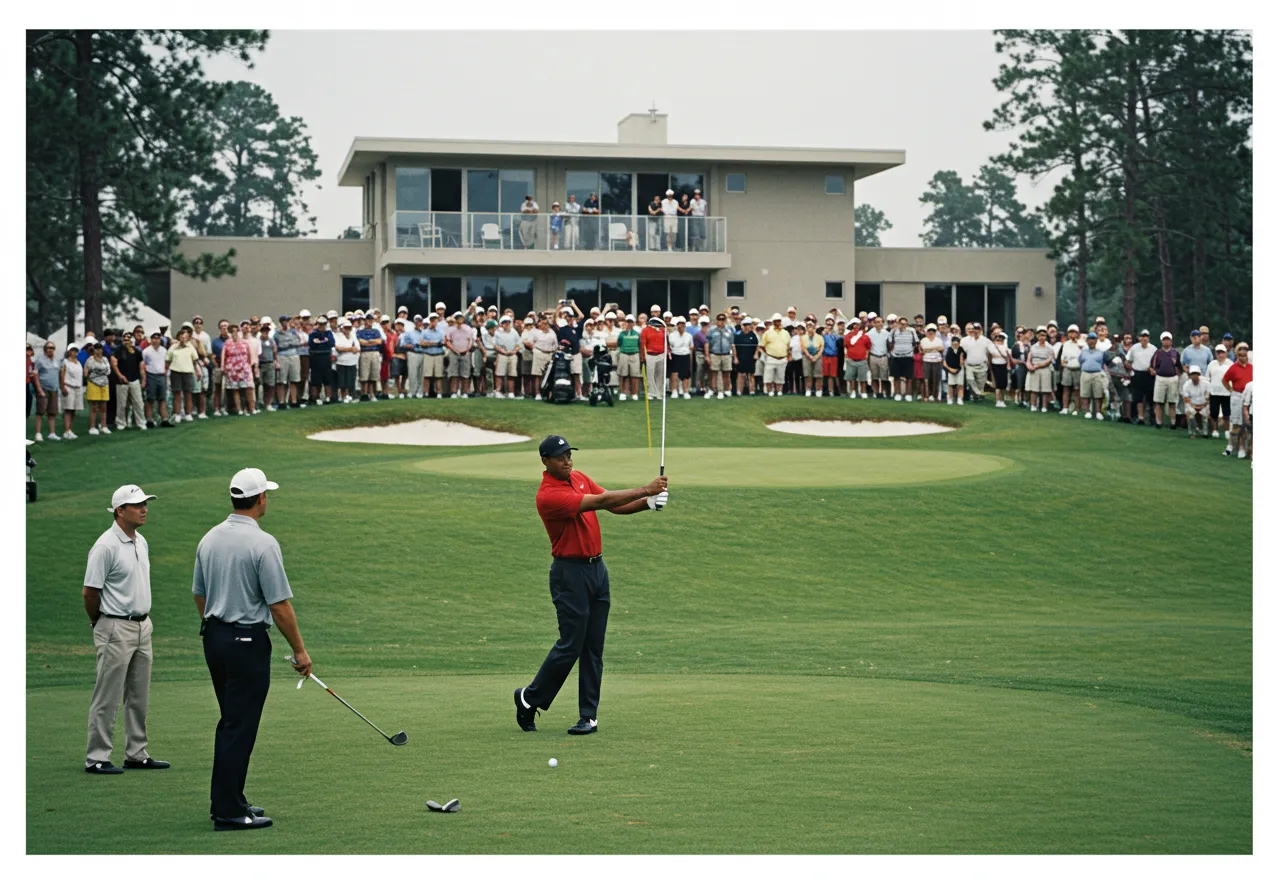
Who First Introduced Tiger Woods to Golf as a Child
As a golf pro, I’ve been inspired by many great players, but no one has changed the game like Tiger Woods.
His journey started when he was just 2 years old, holding a tiny golf club in his garage. And the person who introduced him to golf? His father was Earl Woods.
Earl was a former soldier and athlete, and he noticed right away that Tiger had a special gift.
He coached him, encouraged him, and by age 3, Tiger was already putting on TV shows! That early start helped shape him into one of the greatest golfers in history.
What Big Moments Made Tiger Woods a Golf Legend
Tiger didn’t just play golf; he broke records.
Here are some milestones that made Tiger a global icon:
- In 1997, at just 21 years old, he won the Masters Tournament by a record 12 strokes, the youngest to ever do it.
- He held all four major championships at once in 2000–2001, a feat called the “Tiger Slam.”
- He has 82 PGA Tour wins, tied for the most in history.
- Tiger also spent more than 680 weeks ranked #1 in the world.
As a pro myself, watching Tiger changed how I saw the game; he made golf feel powerful, fast, and cool.
How Did Tiger Woods Make Golf More Popular Around the World
Before Tiger, golf was mostly seen as a quiet game for older players. But when Tiger came in, he brought energy, confidence, and global attention.
His success inspired millions of kids, including people from different backgrounds and countries, to pick up a club for the first time.
Golf TV ratings went up. Sponsorships and prize money grew. And suddenly, golf became a worldwide sport for all ages.
I can tell you this: many of today’s pros, including me, grew up wanting to be like Tiger. His story isn’t just about trophies; it’s about how one player changed the face of the game forever.
Did You Know? Fun Facts About Golf History
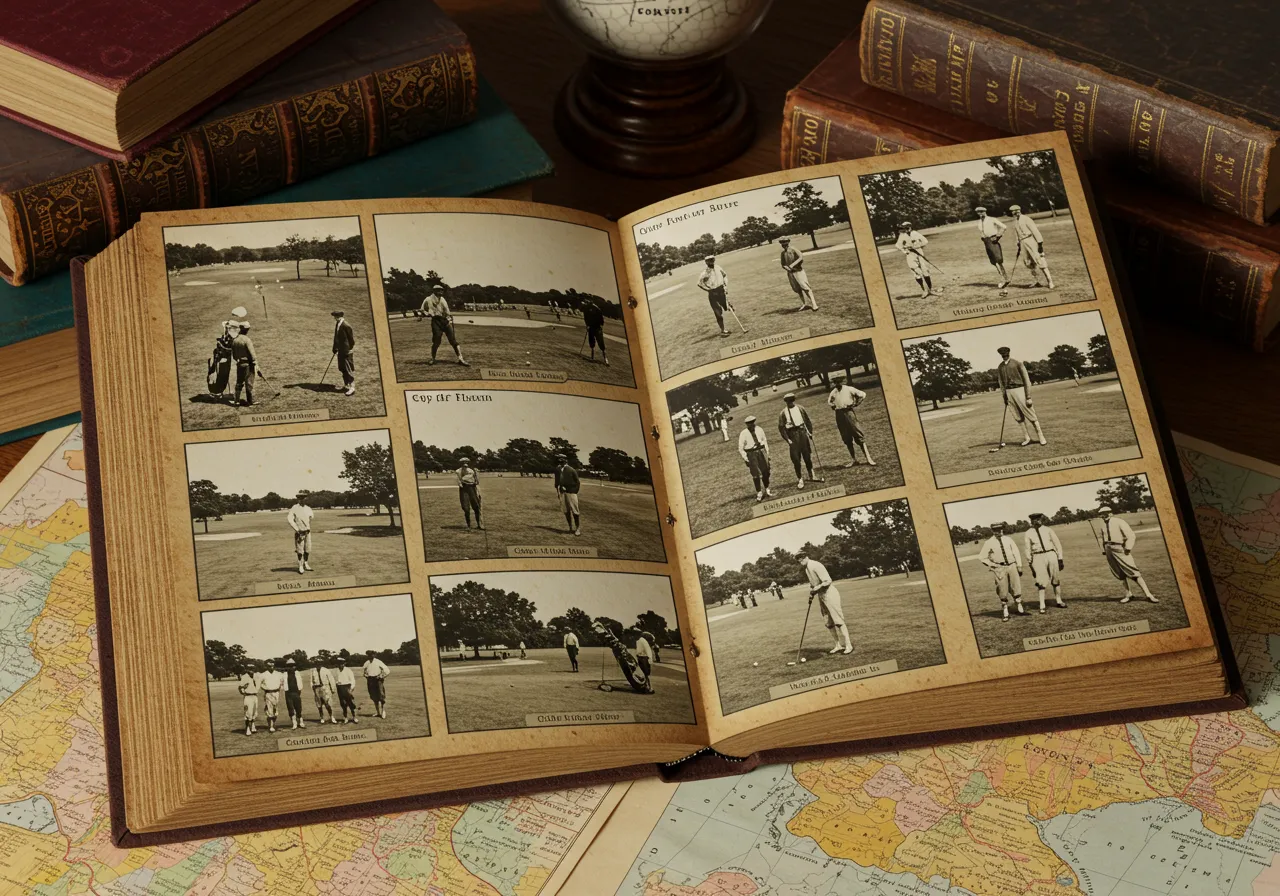
What Is the Longest Golf Course in the World and Where Is It Located
As a golf pro, I’ve played on a lot of long courses, but nothing beats the Nullarbor Links in Australia. It’s known as the longest golf course in the world.
This course is more than 850 miles (1,365 kilometers) long and stretches across two Australian states.
That’s right. You actually drive between holes! Each hole is located in a different town along the highway.
Playing there isn’t just about golf; it’s a full adventure. If you ever want to combine golf with a road trip, Nullarbor Links is the course to visit.
Who Started GolfNow and What Are Some Cool Golf Tech Innovations
I use apps like GolfNow all the time to book tee times, especially when I’m traveling. It’s one of the most popular tools in modern golf.
GolfNow started in 2001 and was later acquired by NBC Sports Group. Now, millions of golfers use it to find courses, book online, and even get discounts.
But that’s not the only cool tech in golf. We now have:
- Rangefinders and GPS watches to measure distances
- Swing analyzers to improve form
- Golf simulators that let you play indoors, even in winter
Technology has made golf more fun, more competitive, and more accessible to players of all levels.
What Country Plays and Loves Golf the Most Today

Based on my travels and what the numbers say, the country that loves golf the most today is the United States.
With over 16,000 golf courses, the U.S. has the largest number of golf facilities in the world.
Other golf-loving countries include:
- Japan, with its high-tech golf ranges
- South Korea, where indoor golf is super popular
- Scotland, where the game began, and tradition runs deep
- Canada and Australia, with strong golfing communities
What’s exciting to me is that golf is growing everywhere, from small towns to big cities, proving that the love for this sport is truly global.
FAQs About the History and Invention of Golf
What is the origin of golf and who invented it?
Golf was invented in 15th-century Scotland, with the first written record in 1457. While older stick-and-ball games like chuiwan in China existed, modern golf began in Scotland, where the rules, courses, and competitive format were developed.
Was golf invented in Scotland or China?
Although chuiwan from ancient China was similar, modern golf was invented in Scotland. It was there that the 18-hole format, early golf clubs, and formal rules were established, especially at St Andrews.
Who is known as the father of golf?
Old Tom Morris is considered the Father of Golf. He helped shape the sport in the 1800s through course design, rule development, and competitive play at St Andrews.
What was the first golf club ever formed?
The Honourable Company of Edinburgh Golfers, founded in 1744, is the world’s first official golf club. It also wrote the first known Rules of Golf.
Why was golf banned in 1457?
King James II of Scotland banned golf in 1457 because it was distracting soldiers from practicing archery, which was essential for national defense at the time.
When did golf come to America?
Golf came to the United States in 1888, when John Reid, a Scottish immigrant, formed St Andrew’s Golf Club in New York. This club marked the beginning of organized golf in America.
Is St Andrews still the oldest golf course in the world?
Yes. The Old Course at St Andrews, established in 1552, is the oldest golf course still in use and is often called the Home of Golf.
What does the word “golf” mean?
The word “golf” comes from the Dutch word “kolf” or “kolve,” meaning “club.” It is not an acronym; the phrase “Gentlemen Only, Ladies Forbidden” is a myth with no historical basis.
Conclusion: The True Origins and Timeless Impact of Golf
Golf, as we know it, was invented in 15th-century Scotland, where the first rules, clubs, and courses were established, especially at St Andrews, the oldest active golf course.
While earlier games like chuiwan and paganica existed, Scotland shaped modern golf.
From early legends like Old Tom Morris to modern icons like Tiger Woods, golf has evolved into a global sport. Its roots in tradition, paired with innovation, continue to shape the game today.
The REAL History of Golf – Who really invented it
Posts References:
Who invented golf, and how did it become so popular
Who Invented Golf